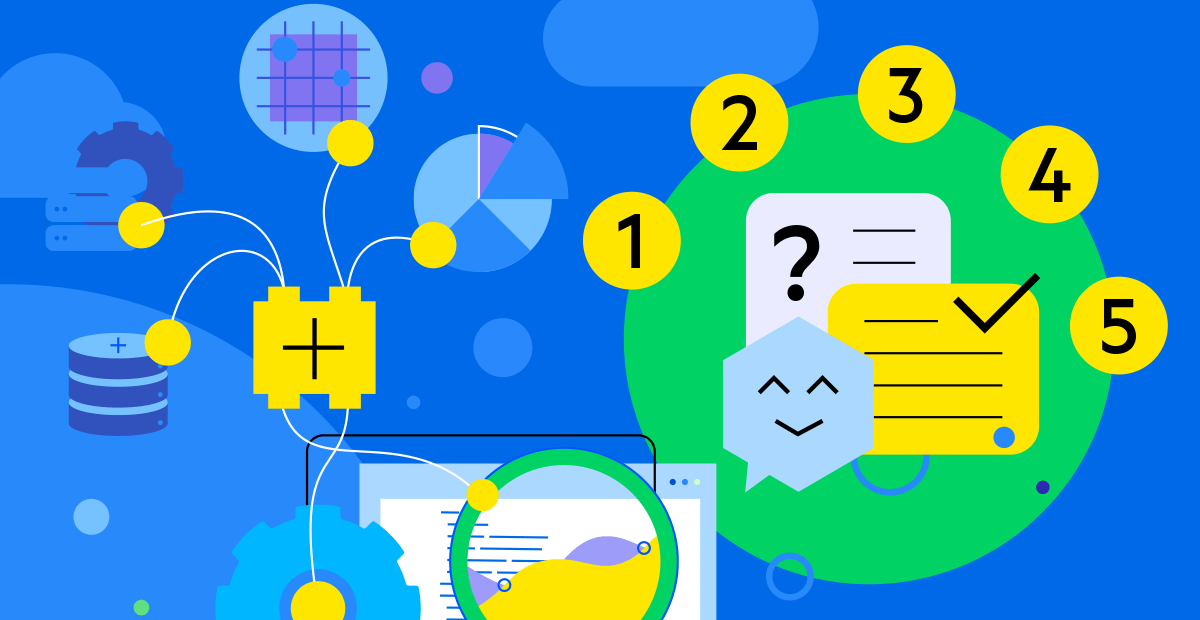Progress DataDirect for BI and Analytics—Top Five FAQs Answered

To help organizations get the most out of their programs, we're answering the top five most-asked questions regarding Progress DataDirect's BI and analytics components.
Recently, I have written quite a few blogs regarding the need to connect to larger amounts of data (and from more data sources) to truly bring out the most value from organizations’ BI and Analytics programs.
Progress DataDirect hosted an Ask me Anything webinar on this very topic, and to say that we received a lot of questions from the attendees would be an understatement. While I would love to include every question we received into this blog, for the sake of not being too long-winded, I have chosen the top five questions we hear in our customer engagements. The “most frequently asked”, if you will.
Without further ado, here are your top five most-asked questions regarding DataDirect’s BI and Analytics components, answered on the webinar by the DataDirect team:
Q. How technical do my people need to be to use Progress DataDirect? Will there be a bunch of training involved to get my people up to speed?
If you're familiar with using the BI tool or ODBC in general, then no additional knowledge is needed; you're just using a different ODBC driver. However, if you are building out a template to use within Autonomous REST Connector, you do have to be a little bit more technical. You'll have to know that back-end API just a bit, and will have to have a little bit more technical background on that. But when it comes back to the application, you're just using an ODBC driver.
Q. Can a DataDirect user have multiple tables in one data source?
Yes, you can have several tables. Regarding OData or ODBC/JDBC, you are technically limitless regarding how many objects you can access simultaneously. Whatever the user has permission to, they should be able to access those. The User Interface (UI) that we are seeing in Power BI, or any other BI tool, will allow you to pull more than one object. Through this, you can even look at the relative information like more pivot types of chart building. So yes, both on the driver side as well as the BI side, you will be able to work with multiple objects from the same data source.
Q. We deal with a lot of regulated data. Does DataDirect provide access permission based on who is allowed to access what data?
We have multiple products to solve that problem. For example, you can use OData models for specific rules and expose it that way. You can also look at our OpenAccess SDK solution which works like a wrapper over your data sources and provides more granularity to decide what kind of rules, columns, tables and objects are exposed to which rule, and from which region. Because that connectivity layer is owned by you, and you will put your code into that, there is a lot of ability to customize and control regarding who can connect to what, and who will have access to what.
Q. Please describe the benefits these tools (DataDirect) help with Power BI data access to OpenEdge database contrasting with ODBC and the ability to get data via app server calls to use business logic?
ODBC exposes data, and that's one way DataDirect can get data into Power BI. The other way is through business logic that is ABL: You can expose that as a REST service using Progress Application Server (PAS) for OpenEdge, and then you can use Autonomous REST Connector again to bridge that gap between Power BI and the REST endpoints exposed by PAS for OpenEdge. Also, as mentioned during the webinar, if you have multiple connectors for a wide range of use cases, you can use DataDirect Hybrid Data Pipeline to make those transitions.
Q. Earlier in the webcast you showed the Magic Quadrant for BI tools. As we all know, it's a very, very, crowded space amongst the four quadrants. The question is, will your Autonomous REST Connector work with other BI tools that you showed on the Gartner Magic Quadrant, not just Power BI?
Yes. The Autonomous REST Connector is also a standard based connector like ODBC and JDBC, so it works with all the BI/Analytics tools that we support and who support standard ODBC and JDBC connectivity. Our Autonomous REST Connector will work with all the BI offerings on the market.
Want to learn more? Listen to the full webinar or request additional info about Progress DataDirect BI connectors.
Do you have a question for Progress DataDirect? Feel free to shoot us a line and we will be happy to help.

Todd Wright
Todd Wright is a former Product Marketing Manager for Progress DataDirect.
